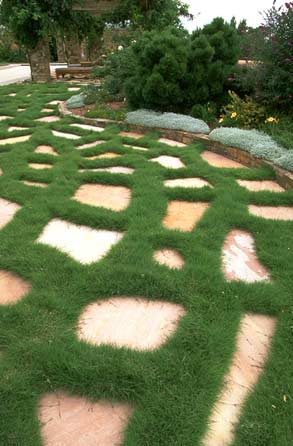“Practical Permaculture” is a column written by Santa Fe Permaculture’s founder and President, Nate Downey. It appears in “The Santa Fe New Mexican’s” monthly Real Estate Guide.
Control Erosion to Preserve Property Value
The majestic Northern New Mexican landscape is often a great selling point for properties here in the land of enchantment. We offer clear skies, gorgeous views, spectacular rock outcroppings and dramatic arroyos that inspire the spirit. For many people a major reason for choosing to live here is the awesome beauty of the rugged Southwest. But the desert landscape can be a double-edged sword.
Sure, the stark beauty found in an eroding cliff is wonderfully exhilarating, but some property buyers (especially those shopping during summer monsoons) will recognize difficulties associated these conditions. When roads and driveways washout or foundations become exposed due to soil erosion, buyers may pass over certain properties. Fortunately, sellers can control erosion for pennies on the dollar. Three permaculture principles are very effective tools in any budgeted war on erosion.
• Make the least change for the greatest possible effect.
• Every element in a system should be multi-functional.
• The problem is the solution.
Sometimes called the ‘low-maintenance’ principle, "make the least change for the greatest possible effect" encourages us to create systems that allow nature to do most of the work.
Sometimes a small pile of stones and branches placed across an arroyo can silt up in one storm and begin to effectively reduce the slope of an arroyo. When the slope of an arroyo bed is decreased, the velocity of water flowing down the arroyo will be reduced — perhaps just enough to prevent sediment from jumping onto a driveway. The second principle, “every element in a system should be multi-functional,” encourages us to design systems that do more than prevent property from sliding gradually into the Rio Grande.
Our systems should also perform other functions. They should add beauty to the landscape, create shade, reduce the damaging effects of wind, stimulate a succession of naturally occurring flora and fauna, and, of course harvest rain and snow whenever possible. "The problem is the solution" encourages us to transform the causes of erosion into positive landscape solutions for arid regions.
Four of the most common causes of erosion here in the high desert are: infrequent (but tremendous) rainstorms; gusty and persistent winds; poor soils; and a typically sparse tree, shrub and ground cover. If vegetation were less spotty, the impact of raindrops on the ground would be reduced, topsoil would be held back by root systems, the effect of shade would protect exposed seedlings, and, ultimately, soil nutrients, mulch, moderated local temperatures, less-erosive wind velocities and increased levels of humidity would prevent many of our erosion problems from getting started. The most significant of these four causes of erosion is the first one. Since we get only 12 inches of precipitation a year, when it does rain, it often comes in short, brutish bursts that push large quantities of sediment down hill. Problems range from roads that fall into arroyos and houses that get buried deep in sand, silt and mud. The good news is that the solution to these problems is the same.
There is no better way to control erosion in the desert than to simultaneously collect all forms of precipitation. This can easily be accomplished if we look at every roof, road and over-grazed slope as a potential water source, a solution — not a problem that comes with desert life. With this new, positive understanding of erosion and rainwater harvesting, we can take great (yet simple!) steps to beautify local landscapes — as we increase not only their market value, but also their value as comfortable and inviting places to enjoy our generally agreeable climate. On the other hand, if eroding landscapes are neglected, monsoonal forces will usually continue to make matters worse. In the most extreme cases, road and utility access becomes prohibitively expensive, buildings begin to slide down slopes and, eventually, significant portions of our precious investments vanish under the pressure of a few good rains.
Published: January, 1999 | Copyright © 1999, Nate Downey.




